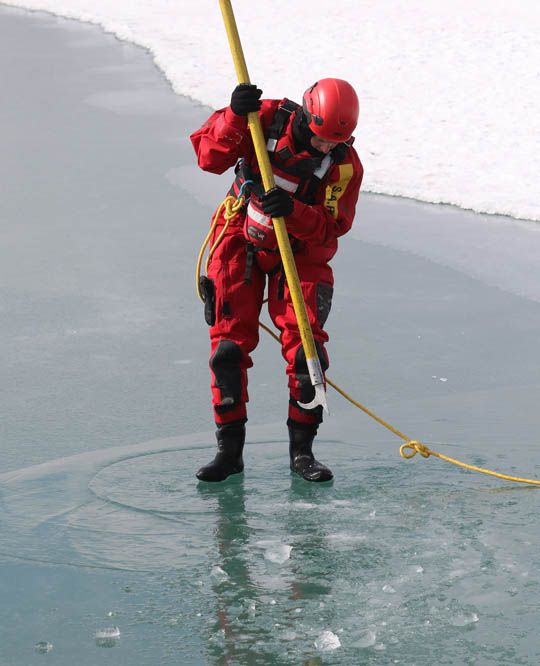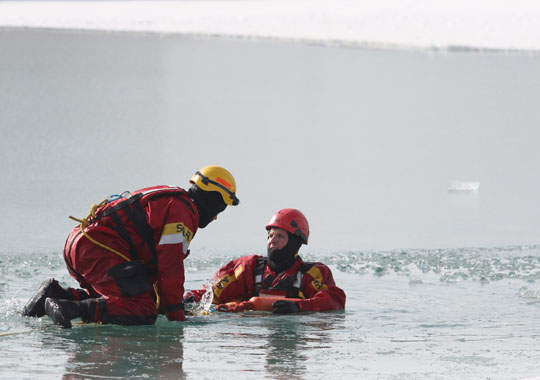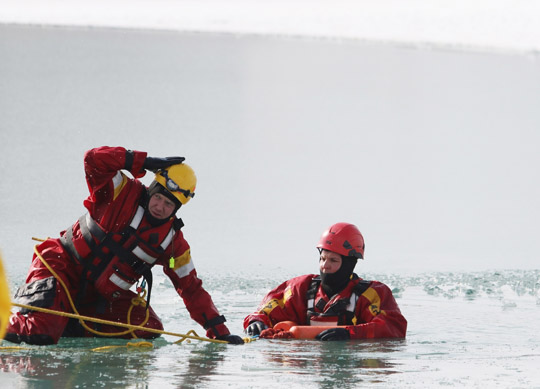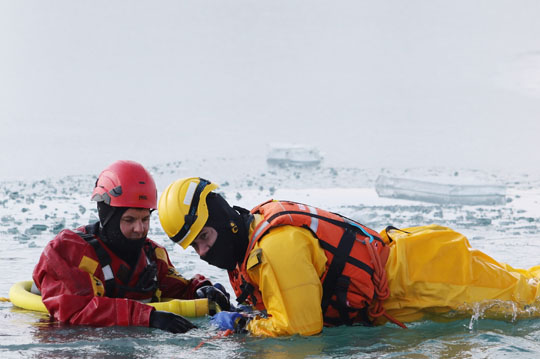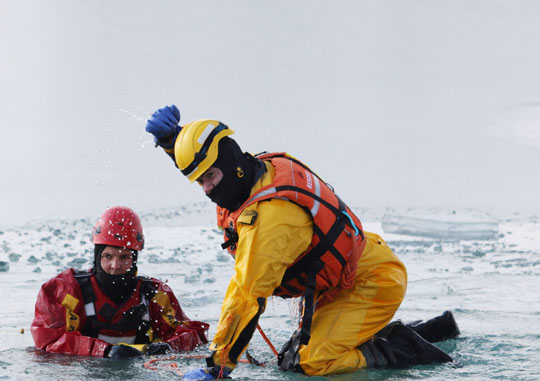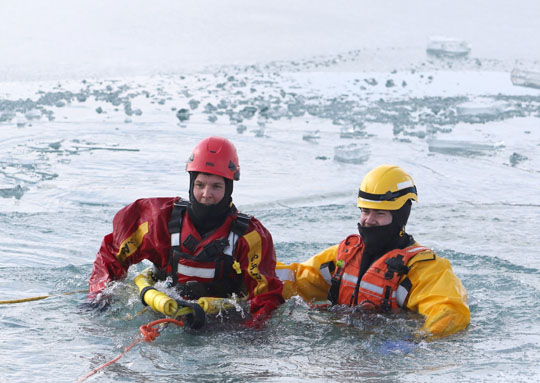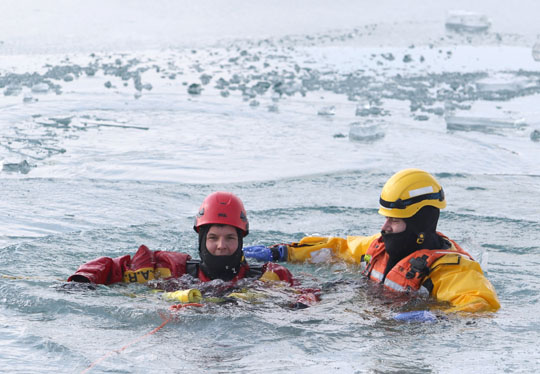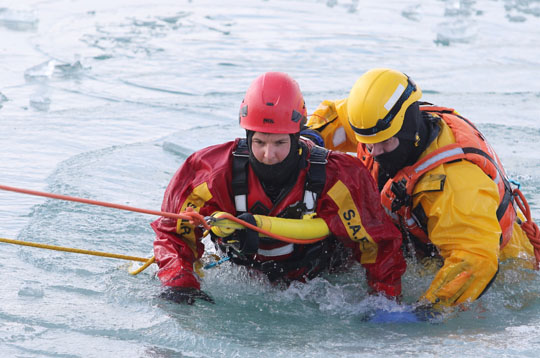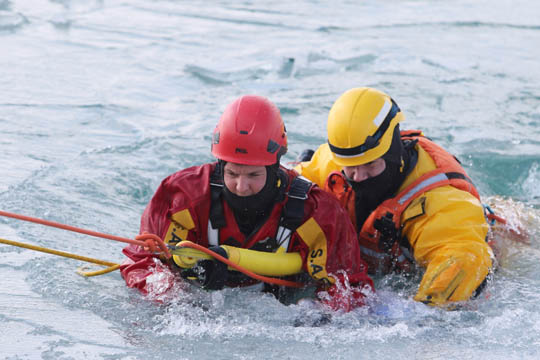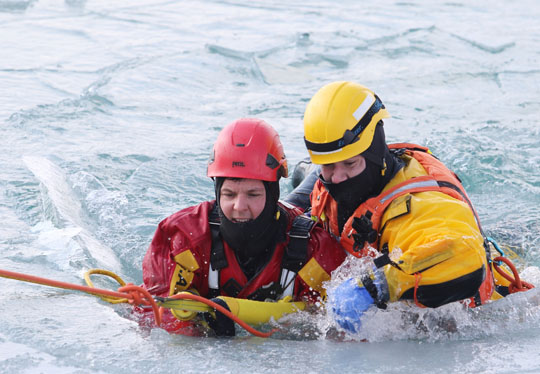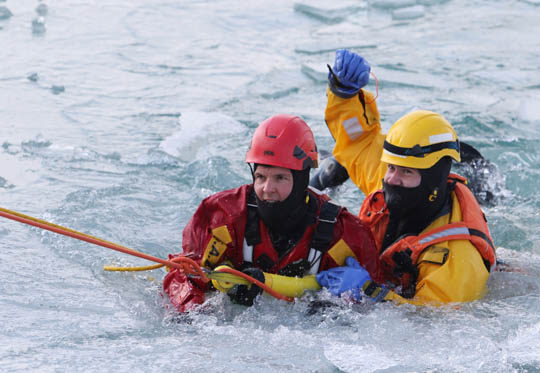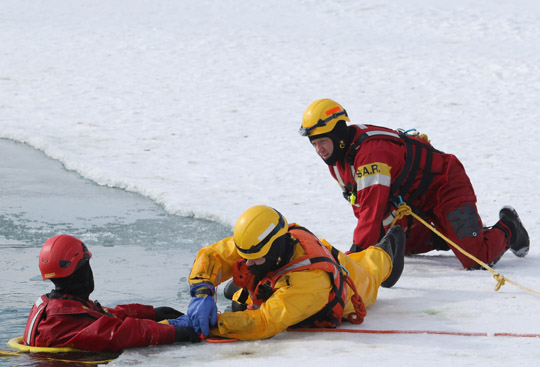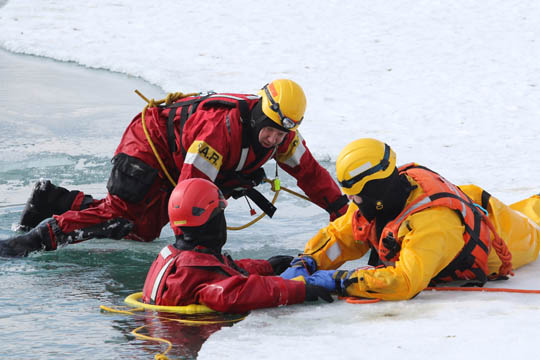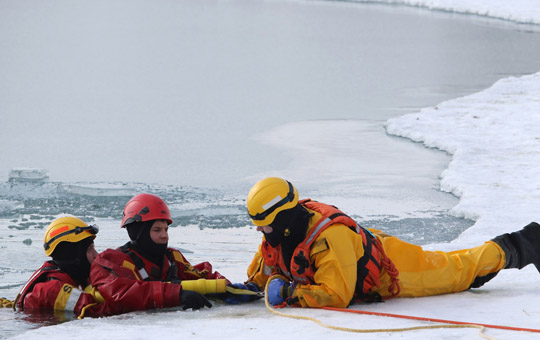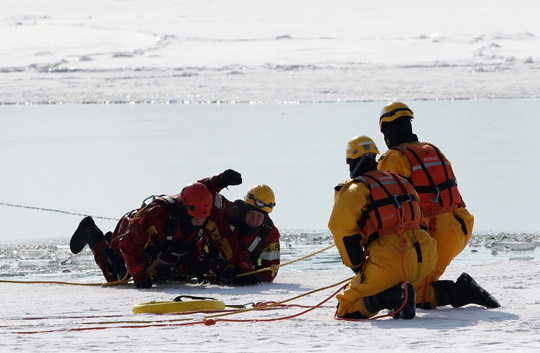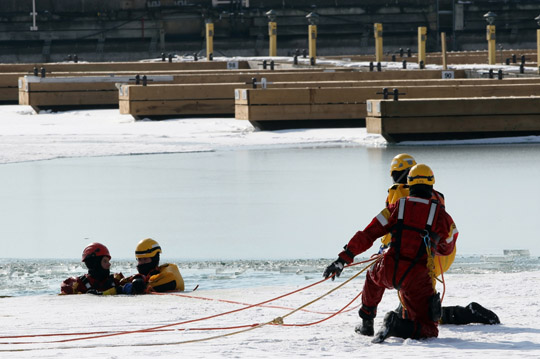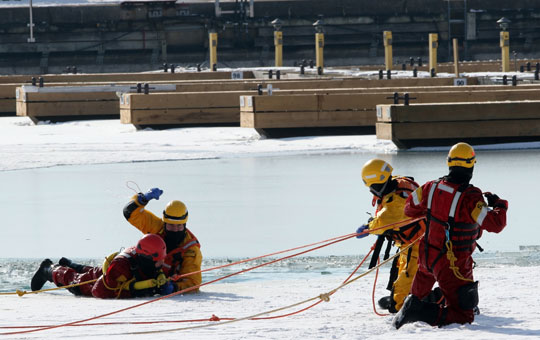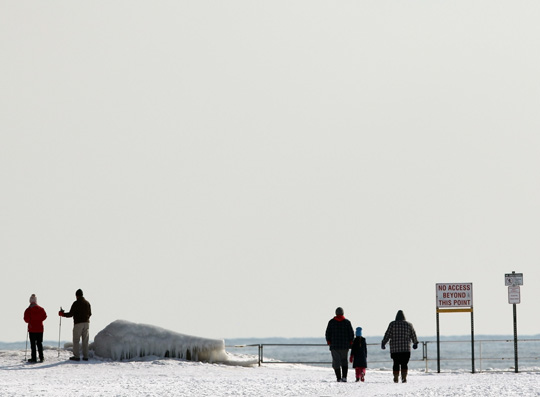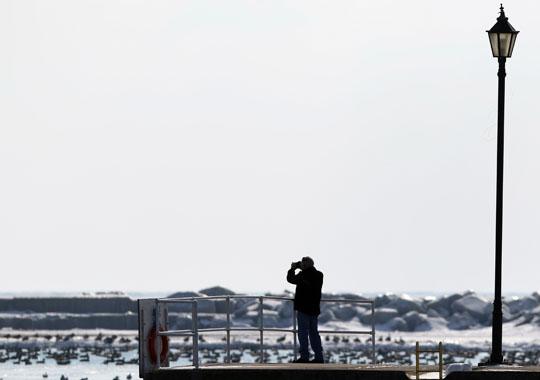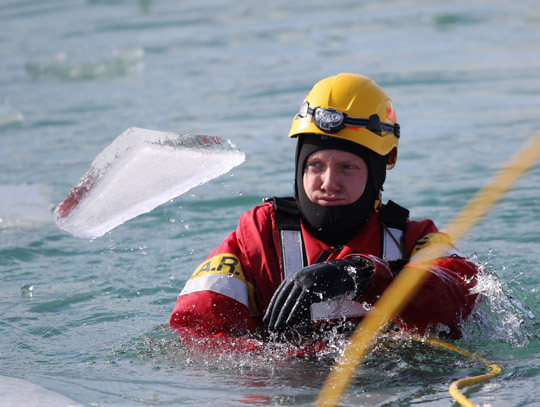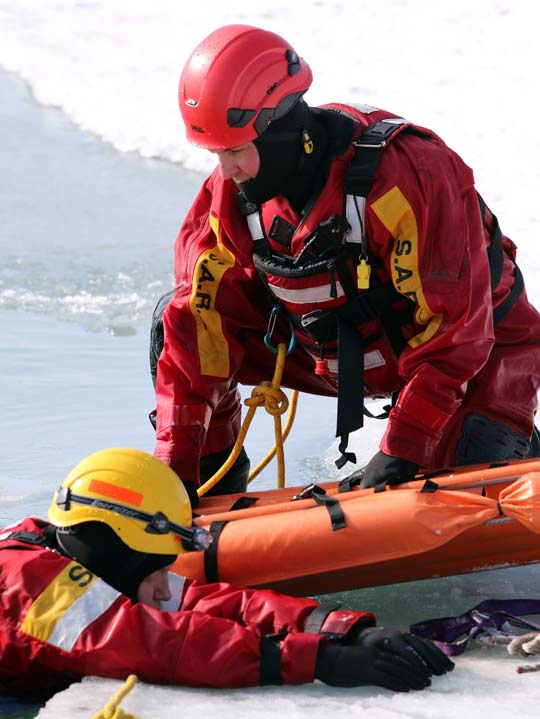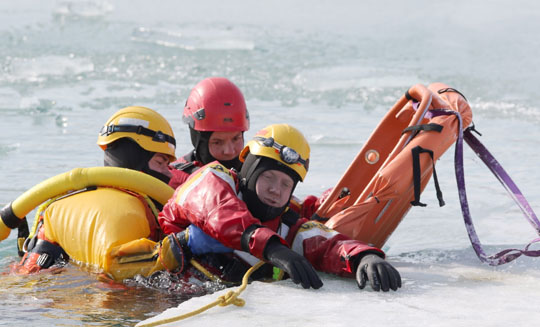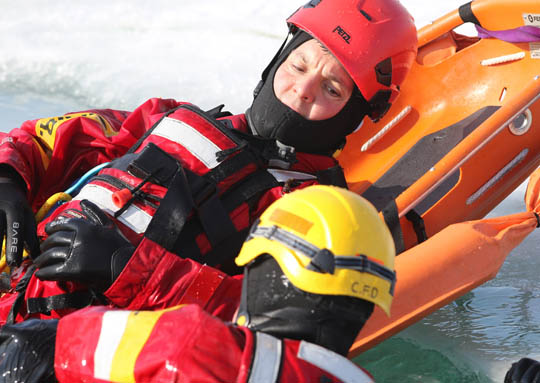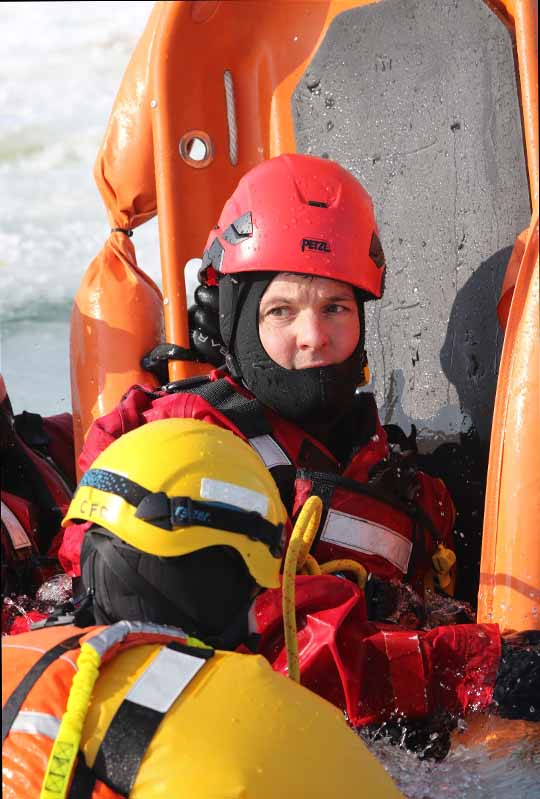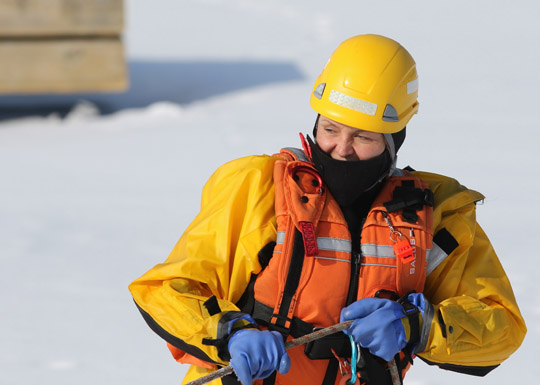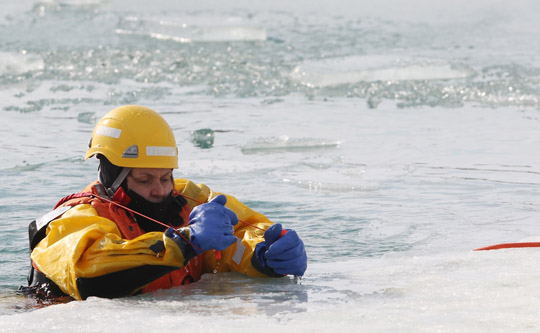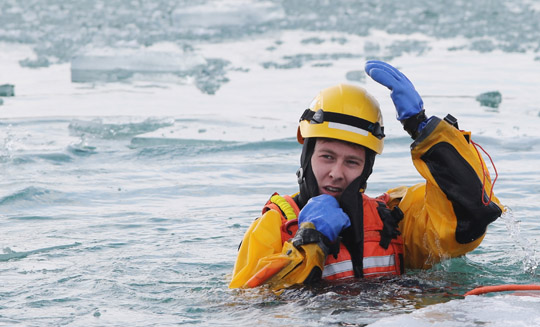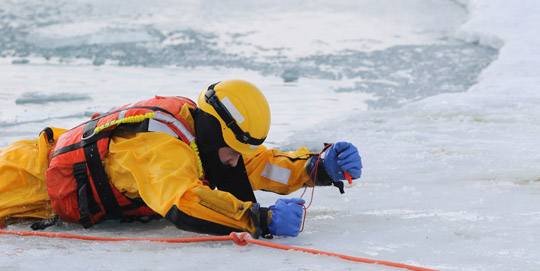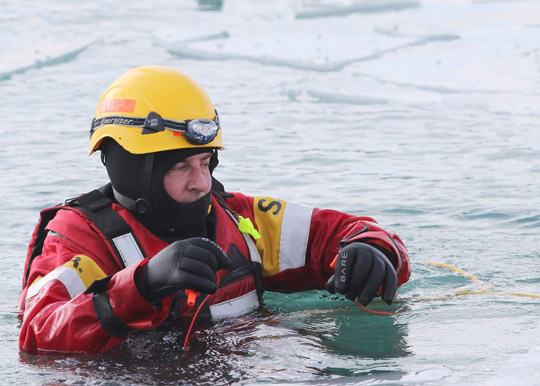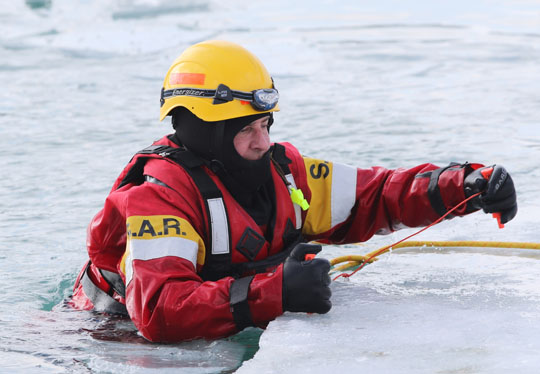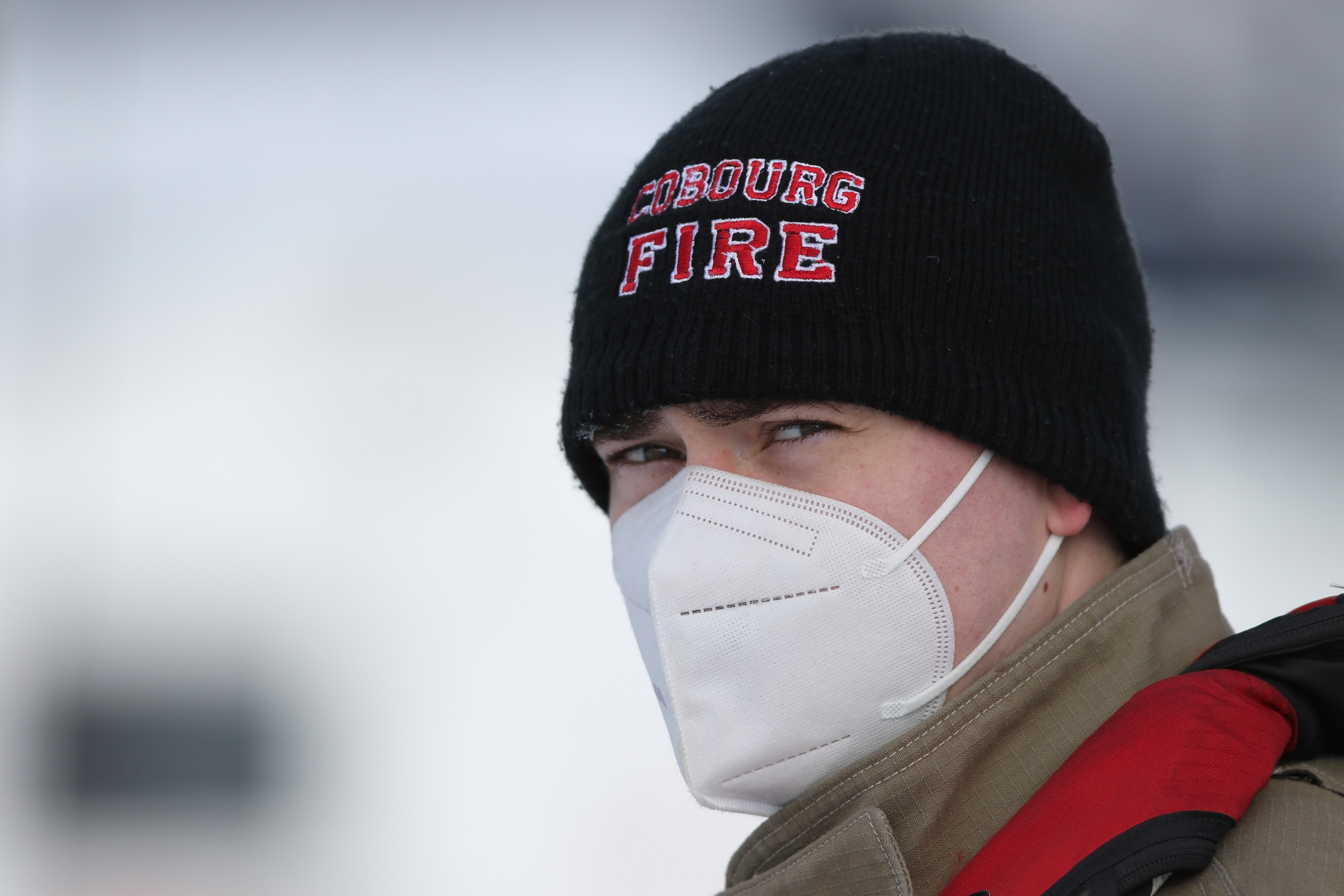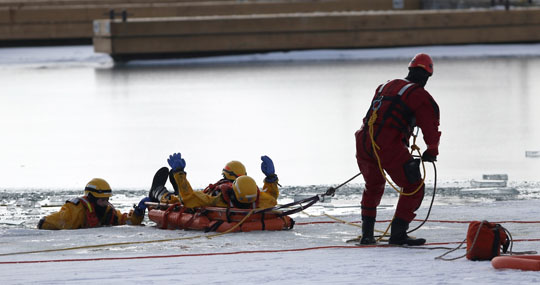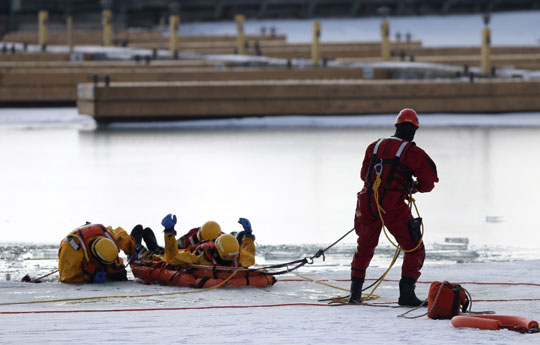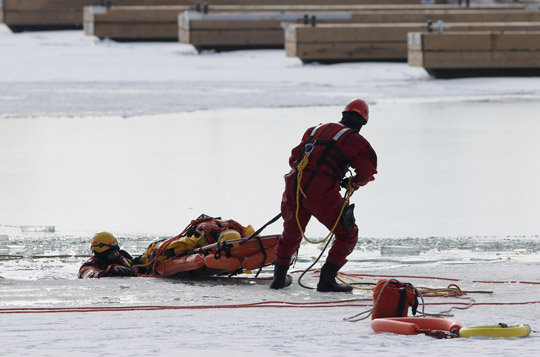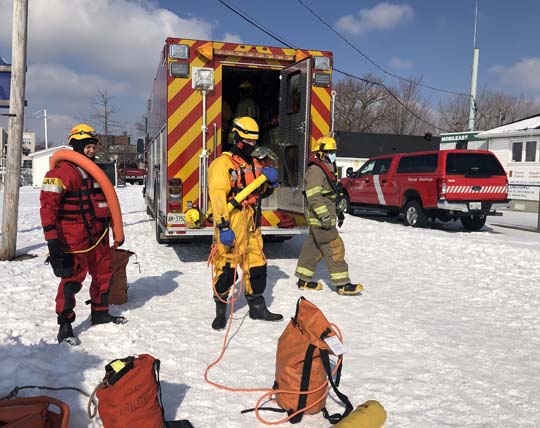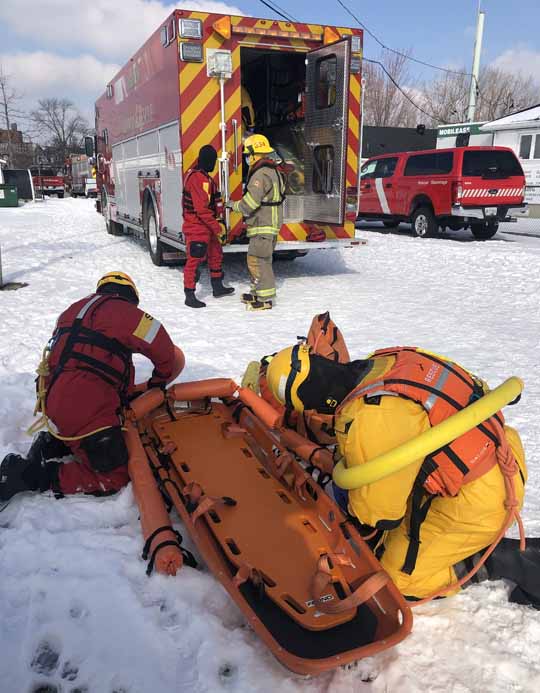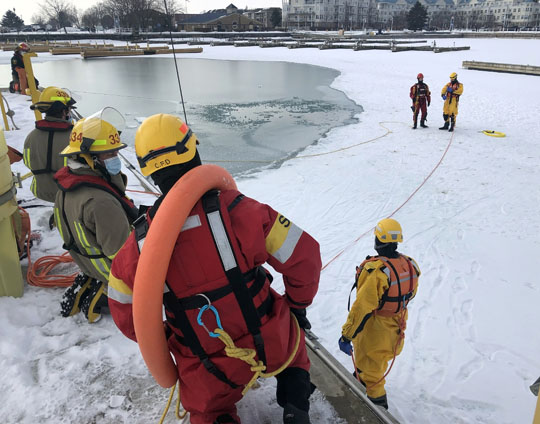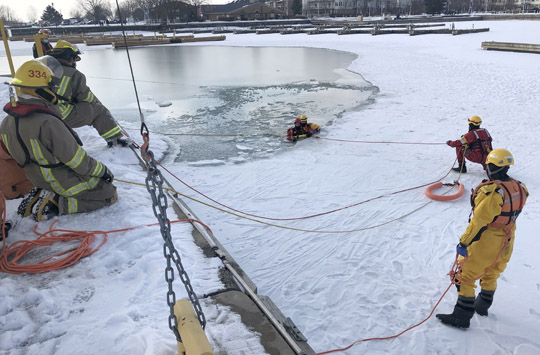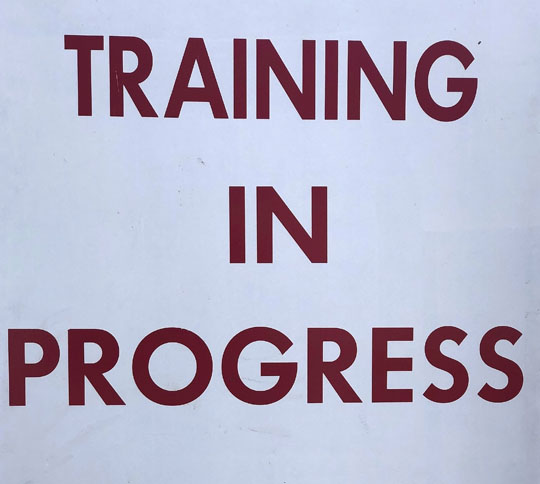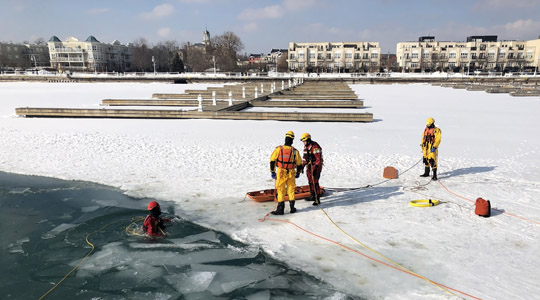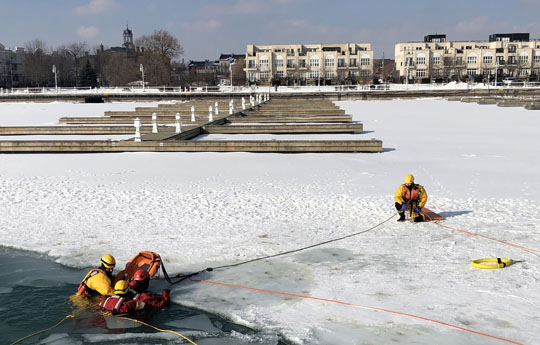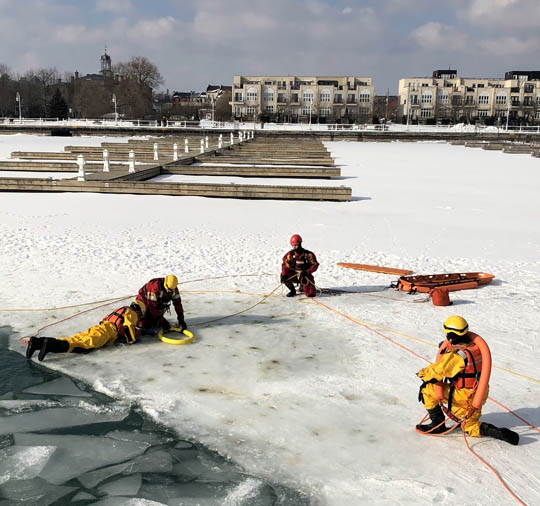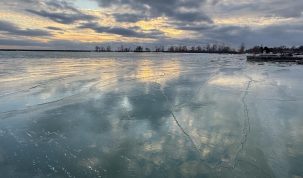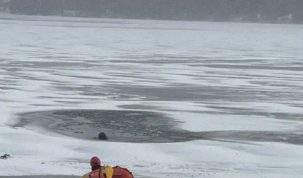Members of the Cobourg Fire Department practised their annual Ice Water Rescue Training at Cobourg Harbour on Sunday, February 21, 2021.
Captain Scott MacDonald said the annual training is something they hope they never have to use in real life and reminds people that the adage, “no ice is safe ice” holds true.
The Insurance Bureau of Canada offers a number of tips for winter safety.
Every winter, 25 to 30 Canadians die in ice-related incidents. When participating in winter activities and during or after an ice storm, be careful when walking or driving on slippery surfaces.
10 Ways to Avoid Ice Hazards
1 Use designated ice surfaces.
Many communities have designated ponds or outdoor ice surfaces – for activities such as skating – that are maintained by knowledgeable personnel. Designated ice should be regularly tested to ensure that it is thick enough and strong enough for recreational use.
2 Measure ice thickness in several locations.
Local conditions such as currents and water depths can affect ice thickness. White ice has air or snow within it and should be considered suspect for recreational use.
3 Avoid travelling on ice at night or when it is snowing.
Reduced visibility increases your chances of driving onto an open or weak ice area. This is a frequent cause of ATV- and snowmobile-related drowning.
4 Never go onto ice alone.
A companion may be able to rescue you or go for help if you get into difficulty. Before you leave shore, tell someone where you are going and what time you expect to return.
5 Stay off river ice and avoid the narrows between lakes.
River currents and moving water at the narrows where one lake flows into another can quickly change ice thickness or cause ice to be much thinner than in other locations on the river or on the lake.
6 Wear a thermal protection buoyant suit or a lifejacket.
If you don’t have a thermal protection buoyant suit, wear a lifejacket or PFD over your snowmobile suit or layered winter clothing to increase your survival chances if you go through the ice.
7 Take safety equipment with you.
Pack ice picks, a rope and a small personal safety kit (i.e., a pocket knife, compass, whistle, fire starter kit and cellphone) in your pockets or backpack.
8 Avoid alcohol.
Alcohol impairs your judgment, coordination and reaction time and speeds up the onset of hypothermia.
9 Don’t drive on ice if you can avoid it. If you can’t avoid it, have an escape plan.
Open your windows, unlock your doors and turn on available lights to allow for a quick escape from your vehicle. Some ice safety experts recommend that you have your seatbelt unfastened and your door slightly ajar to speed up an escape. Don’t wear a lifejacket while riding inside an enclosed vehicle; the extra bulk and flotation could hamper your escape through a window.
10 Always supervise children playing on or near ice.
Children playing on or near ice should always be with a companion and under adult supervision.
MacDonald adds, for those living along the lakeshore stay off the ice formations along the lakeshore.
All the firefighters on the ice were wearing cold water immersion suits and were roped off to firefighters on shore for safety.


